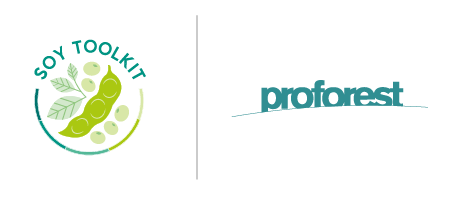Element 4: Establish a soy purchase control system
Clarity over companies’ actions depending on suppliers’ different levels of performance allows for faster and safer decisions. In this element, companies will understand how to implement a purchase control system that will enable sourcing procedures to address the requirements of soy sourcing policies, bearing in mind the prevailing sourcing models.
These systems outline what to do when a supplier performs below the desired level, including the conditions in which a supplier should be delisted, but also the conditions for reinstating a supplier after exclusion or suspension.
1. Determine your minimum requirements
A purchase control system aims to screen soybean producers based on non-negotiable criteria in the policies, triggering specific actions depending on soy suppliers’ performance. The minimum requirements should be defined considering:
Legal requirements;
Soy buying companies’ commitments beyond legality (e.g. halting any deforestation).
Other potential requirements include:
No forced labour;
No overlays with Indigenous territories;
No deforestation in the Amazon biome;
No conversion in the Cerrado biome.
2. Assess and validate producer performance
Automating the assessment of soybean suppliers against minimum purchase requirements will allow every single purchase to be classified as compliant or non-compliant. If soy producers are flagged breaching the requirements, an automatic system prevents the purchase from going through.
3. how to reintegrate a suspended supplier into your supply chain?
Sourcing policies will be operationalised by procurement teams, who liaise with soybean producers on a daily basis. Having clarity on what happens when non-compliance is flagged is instrumental to help fast decision-making.
Key points
Purchase control systems operationalise legal, social and environmental screening of soybean producers.
Some direct soybean buyers have set automatic purchase control systems in Brazil. Those flag policy non-compliance in soy production, allowing them to take appropriate action such as the suspension of non-compliant purchases.
By flagging policy breaches and setting pathways to both prevent purchases and resolve issues, direct soybean buyers can accelerate the implementation of responsible soy sourcing policies on the ground.
Learn more in Briefing note 4: Incorporating responsible sourcing policies in purchase controle systems.








